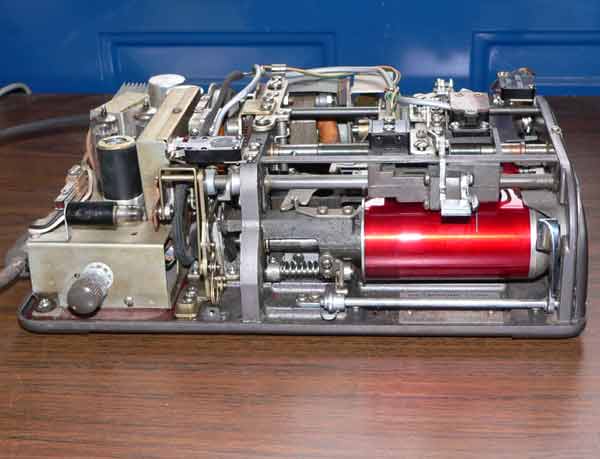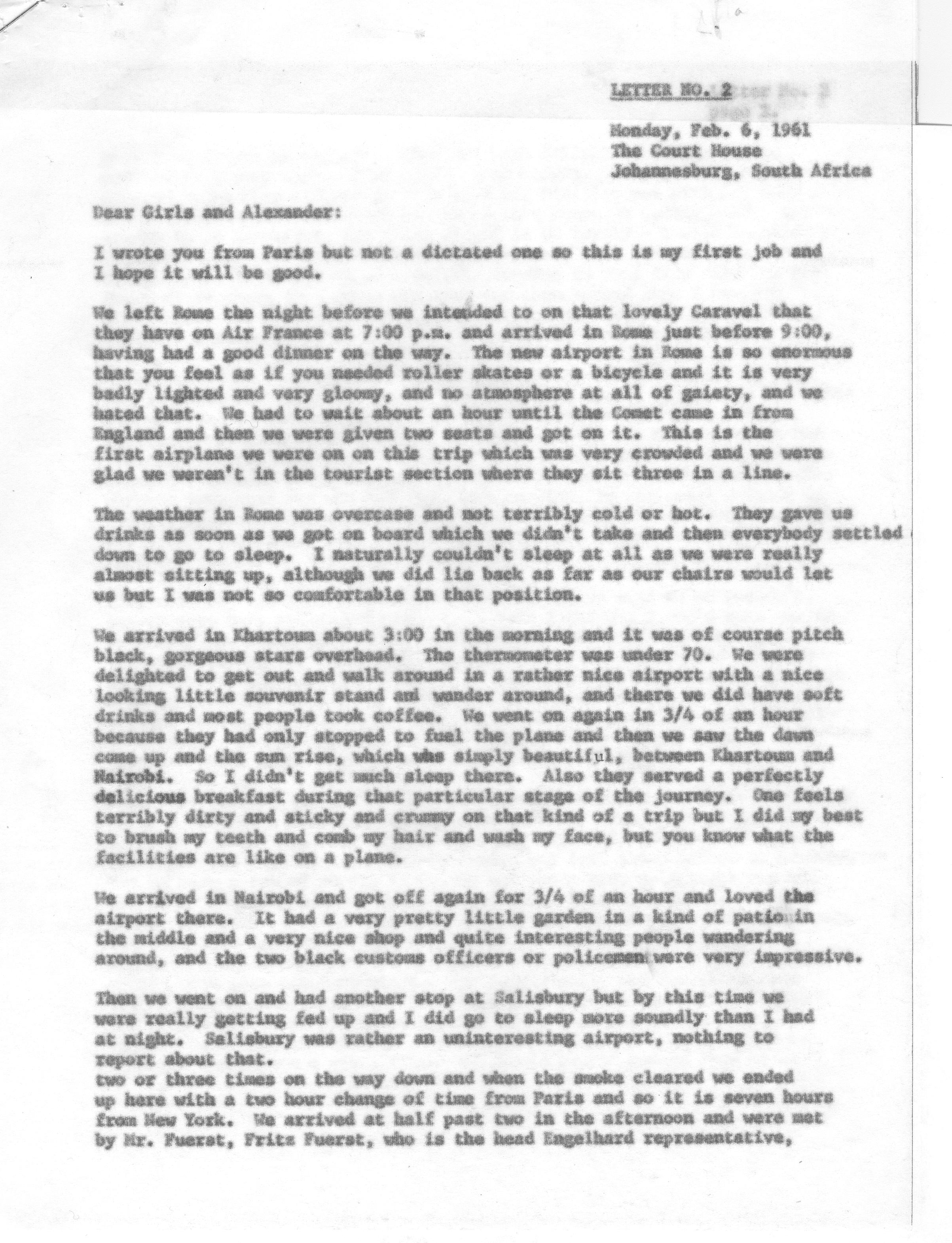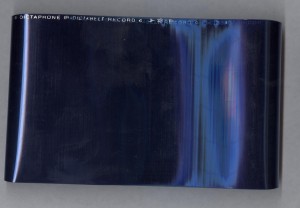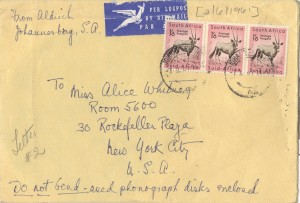The Library holds a treasure trove of material that dates back to our beginnings in 1822. My favorite objects are those of recorded media that has evolved since the 1880’s. These range from early transcription discs of 1930’s WJAR radio broadcasts to the 1950-1980’s 2” magnetic videotape from local television stations, WPRI and WJAR.
The one thread that ties these all together is they are all recorded on obsolete media that requires specialized training and equipment to transfer the contents onto a more accessible media. Another common characteristic is that this technology, unlike photographic film which is eye-readable, needs a machine to play it back on.
The focus of this article is on the Dictabelt recordings that are part of the un-cataloged Aldrich Family Graphics Collection. The Dictabelt itself was a technological innovation from its predecessor, the soft wax cylinder which was in popular use from about 1887-1915.
In 1947, the American Dictaphone Company introduced the Dictabelt recorder and media for office and personal use.


The Society holds the Winthrop W. and Harriet A. Aldrich Papers, MSS 938, Sub Group 3 which is accessible to researchers and includes transcriptions of Dictabelt recordings made by Mrs. Harriet A. Aldrich from about 1947-1969. As Mr. and Mrs. Aldrich traveled extensively throughout the world, Mrs. Aldrich would mail these voice letters to her secretary, Alice Whitney in New York for transcription. Once transcribed, copies of the letters would be sent out to the recipients and also to Mrs. Aldrich. These letters were written to Mrs. Aldrich’s sisters and her children, Mary, Harriet Crocker, Lucy Truman, Elizabeth “Liberty” Brewster and Alexander.
For example, in a letter addressed to her children dated Monday, February 6, 1961, Mrs. Aldrich talks about traveling through Rome’s new airport which she finds is large enough to bicycle through yet badly lit and gloomy. She goes on to talk about arriving in Khartoum at 3 in the morning under a darkened sky full of stars and the temperature just under 70.




Even though we have a transcript from the original 51 year old Dictabelt recording, wouldn’t it be great to also hear Mrs. Aldrich’s voice?
James DaMico
Special Collections Curator
See also:
Winthrop W. and Harriet A. Aldrich Papers, MSS 938, Sub Group 3 : http://rihs.minisisinc.com/rihs/scripts/mwimain.dll/144/RIHS_M2A/LINK/SISN+4133?SESSIONSEARCH
Dictabelt Record: about: http://www.dictabeltrerecord.com/about.htm
Vintage Audio Recording History – Gramophone Phonograph Tape Reel Cartridge Wire 78: http://www.videointerchange.com/audio_history.htm
Association of Research Libraries (ARL)Pictorial Guide to Sound Recording Media: http://www.arl.org/preserv/sound_savings_proceedings/Pictorial_guide.shtml
